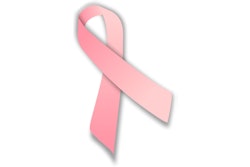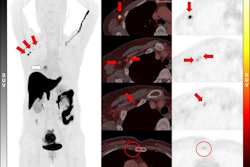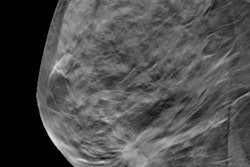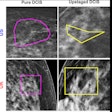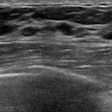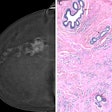The incidence of invasive lobular carcinoma (ILC) is rising among women, suggest findings published October 7 in Cancer.
ILC incidence increased between 2.5% and 4.4% from 2012 to 2021 among women from various ethnic and racial backgrounds, wrote a team led by Angela Giaquinto from the American Cancer Society (ACS). It also reported that white and Black women have the highest incidence overall.
“Breast radiologists should be well informed about how lobular breast cancer may appear differently during mammography than other types of breast cancer, especially as it increases in incidence,” Giaquinto told AuntMinnie.com.
ILC is the second most common breast cancer subtype, but the researchers suggested that understanding disease trends may be lacking due to breast cancer statistics and clinical trial data “largely reflecting” ductal carcinoma.
ILC has distinctive characteristics that can contribute to delayed detection, resistance to therapy, and poorer prognosis for advanced disease. This includes cancer cells spreading in a single-file pattern, making it harder for standard mammography to detect ILCs.
The ACS researchers used national data from the Surveillance, Epidemiology, and End Results (SEER) program to analyze contemporary ILC occurrence and survival in U.S. women. They also compared the results to invasive ductal carcinoma (IDC) trends.
The researchers reported the following findings:
- 33,600 women in the U.S. are projected to be diagnosed with ILC in 2025.
- From 2017 to 2021, lobular breast cancer accounted for 10.6% of histologically confirmed breast cancer cases in the U.S., about 14 cancer cases per 100,000 women.
- ILC incidence rates increased from 2012 through 2021 in all racial ethnic groups, ranging from 2.5% annually in American Indian/Alaska Native women to 4.4% annually in Asian American/Pacific Islander women.
- White women have the highest incidence overall (14.7 per 100,000), and in every age group, followed by Black women (11 per 100,000).
- ILC is more likely to be diagnosed at an older age than IDC (66 vs. 63). And 56% of cases diagnosed among women aged 65 years or older were ILCs compared to 46% for IDCs (p < 0.05).
- The incidence of lobular breast cancer has increased from six cases per 100,000 women in 1975 to 14 cases per 100,000 women in 2021.
Giaquinto said with these findings in mind, women should continue to make lifestyle choices that lower their risk of all types of breast cancers by maintaining a healthy weight, being physically active, avoiding tobacco, and reducing alcohol consumption.
“Due to the unique growth pattern of lobular breast cancer which may make it more difficult to be caught during screening, women should be vigilant of any changes to their breasts and speak with their doctor if changes arise,” she told AuntMinnie.com.
Giaquinto also called for more research on how alternative breast cancer imaging may impact this specific breast cancer. She said she hopes these findings encourage more distinction of subtypes in future clinical trials.
“Our team continues to monitor these lobular breast cancer trends in addition to trends of all other types of breast cancer,” she said. “These trends will be updated within our bi-annual Breast Cancer Statistics article that will be next published in 2026.”
Read the full study here.





